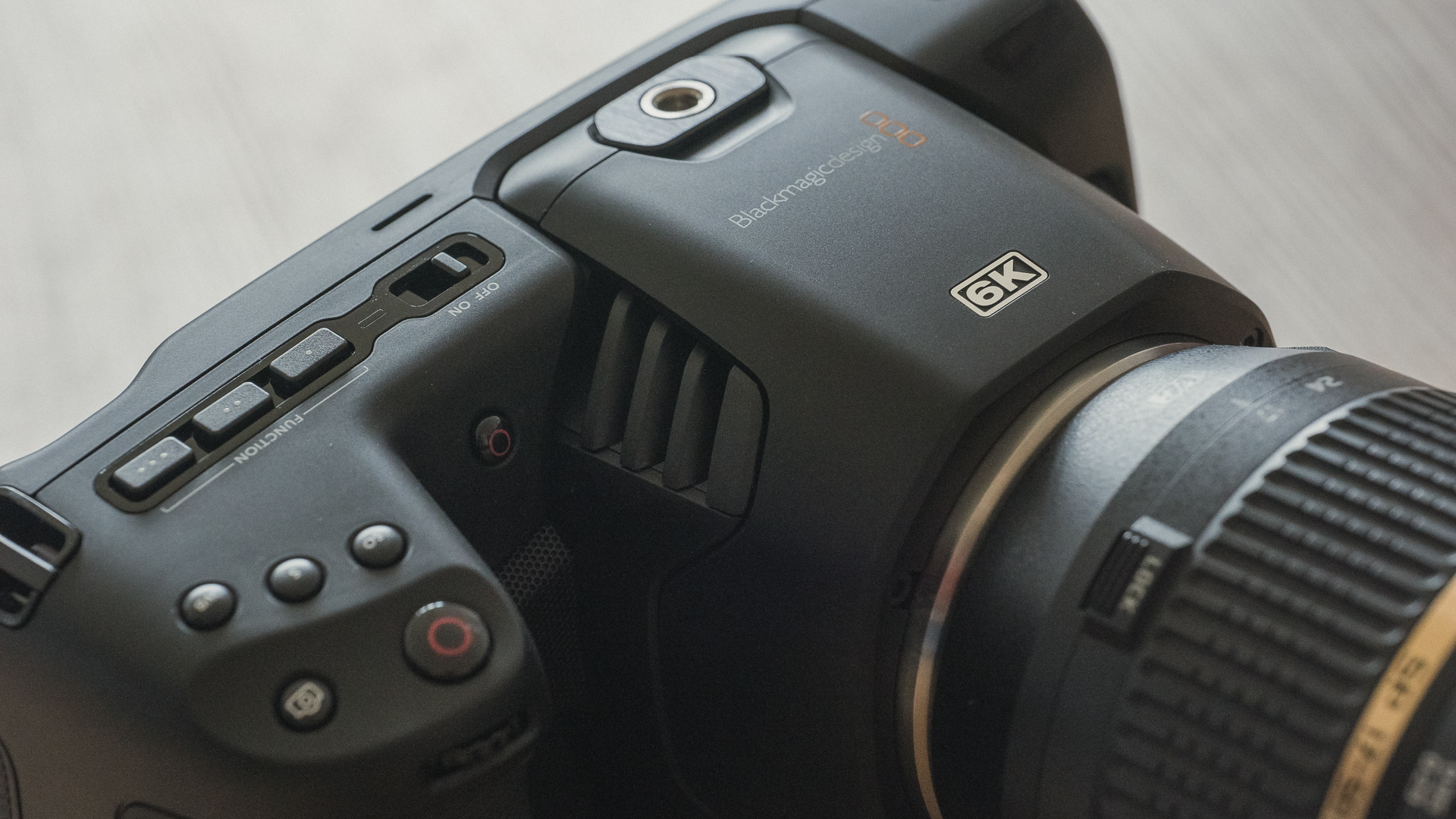
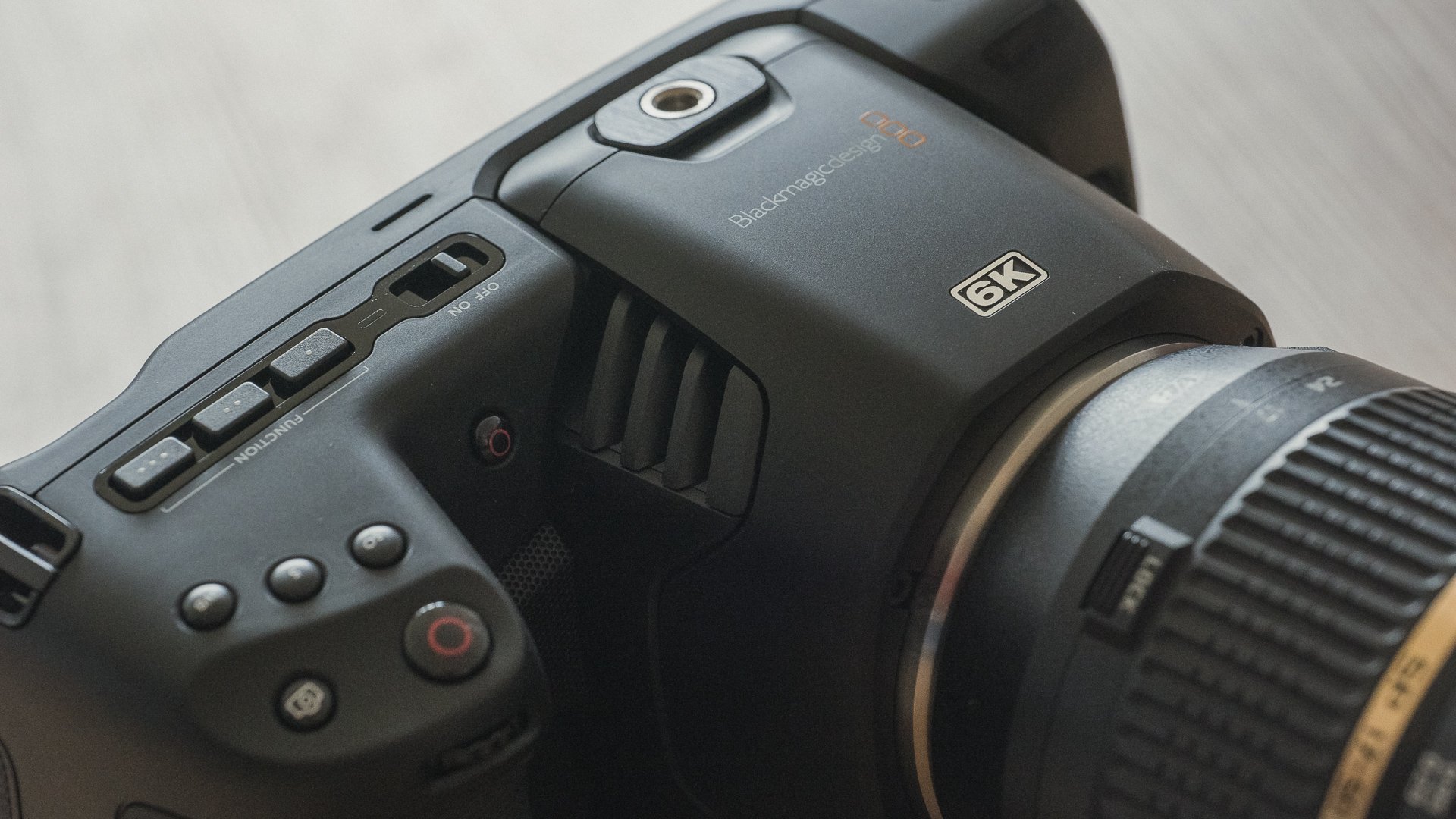
It took the video world by surprise last week, and we have our hands on one of the first. Here's a first look at the Blackmagic Design Pocket Cinema Camera 6K.
The BMPCC 6K has, it's fair to say, set the video world alight again. I have to admit, I wasn't expecting it. In fact my prediction was for an update to the Studio cameras. Although on reflection I have no idea why! Regardless, this morning I took delivery from those fine folks at Blackmagic of one of the first 6K BMPCC's in the UK. This won't be an 'unboxing' because it was supplied in a Pelicase with none of the original packaging. But I will offer some initial comparisons with the 4K, which I own.
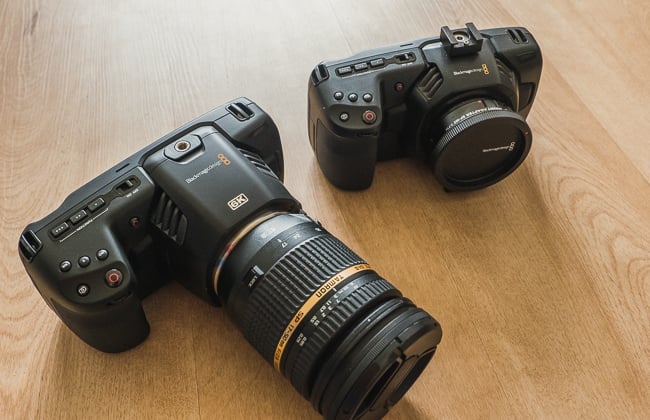
The BMPCC 6K next to the 4K
From the outside, the new 6K Pocket looks pretty much exactly the same as the 4K, save for one very obvious difference. The lens turret is much, much bigger. This lens turret is also home to some larger air intake vents. The underneath of the camera, too, features much larger air vents than the 4K camera.
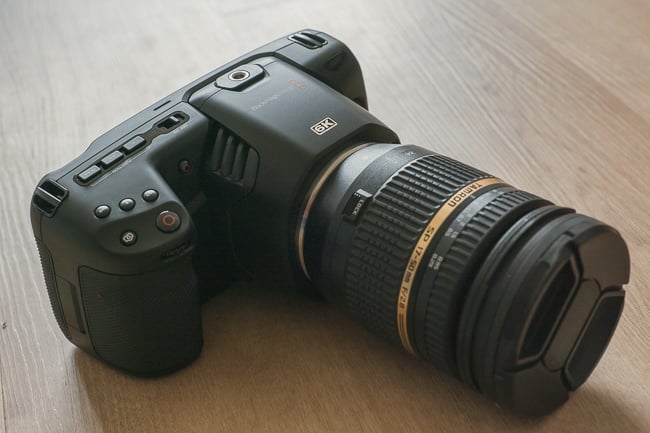
The BMPCC 6K has a much longer lens turret than the 4K along with larger air vents
Apart from those differences, the body is exactly the same as the 4K. Same materials, same buttons and controls, and the same E6 battery system.
The 6K camera features a S35 sized sensor along with an EF mount, which means that there is no need for a Speed Booster style adaptor for such lenses. BMD's decision to use an EF mount has caused a bit of discussion online. Why didn't it go for a full frame sensor and the newer RF mount? Why couldn't it have produced one with an E-Mount?
Let's establish one thing. The lack of a full frame sensor is not the end of the world. The motion picture industry has managed for many years just fine with a S35 gate, and I don't recall anyone calling films like Terminator 2 'uncinematic'. RF lenses are also few and far between. The simple fact is that EF lenses are ubiquitous and easy to find. Why not have Z Mount? Or L Mount? The list could go on. Sony does not license out its E-mount, and yes perhaps BMD could join the alliance to have an L Mount, but when all is said and done, no matter which type of mount it chose to use there would be complaints from somewhere. EF is a known quantity, and there are masses of lenses out there that use it, and it can easily be adapted to old manual lenses such as Pentax Super Takumars. In other words it isn't an issue unless you are determined to make it into one.
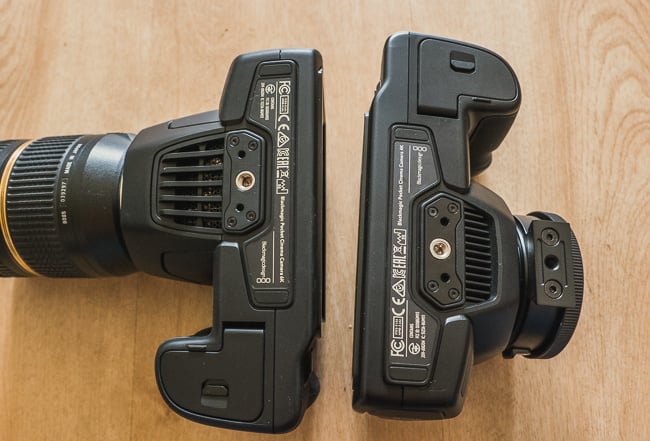
The vents. 6K on the left, 4K on the right
Most of the general capabilities of the Pocket 6K are pretty similar to the first camera, from the dual native ISO to the dynamic range. There are slight differences, but they are so minor as to make no real difference in the real world. But one thing that has caught my eye is that the 6K can perform 120fps at 2.8K resolution, which although still windowing the sensor it is still an enormous step up from the 4K at the same frame rate. So I will be very interested to try this mode out.
Another mode that has been made more useful due to the sensor upgrade is the stills mode. This is not aimed at replacing your stills camera, but the 21.2MP resolution means that if you do need to take the occasional photo, you can, without much limitation on the final resolution.
The proof of the pudding with the BMPCC 6K will most certainly be in the eating because of the external similarities between models. The 6K resolution should theoretically mean even better 4K output in final videos. But I think it's important to keep a seperation between the two in terms of their respective markets. The 6K is nearly double the price of the 4K, and the sensor will lend itself to different types of application. Look out for our in-depth review coming very soon!
Tags: Production


Comments